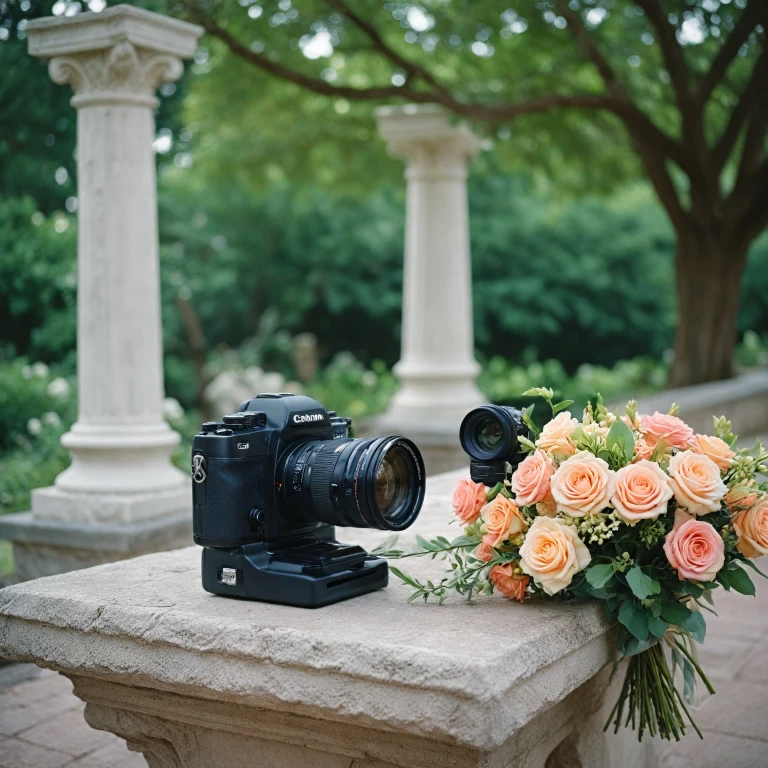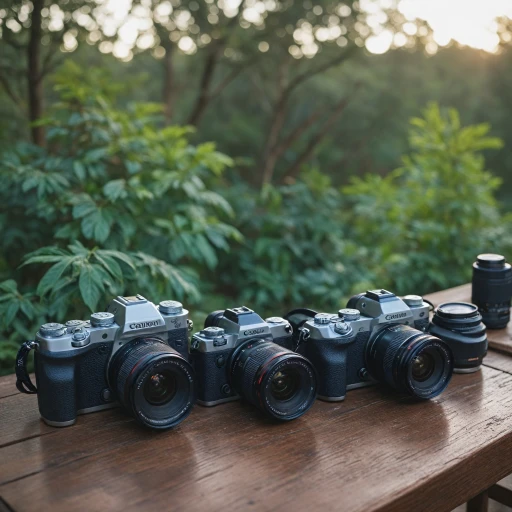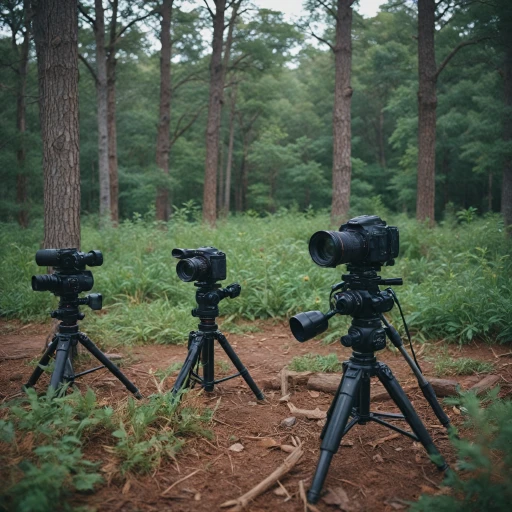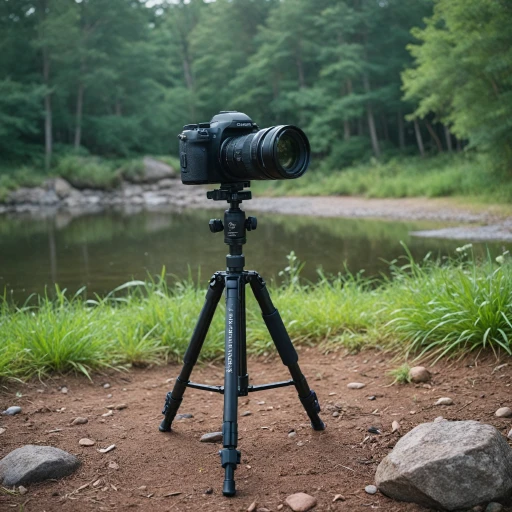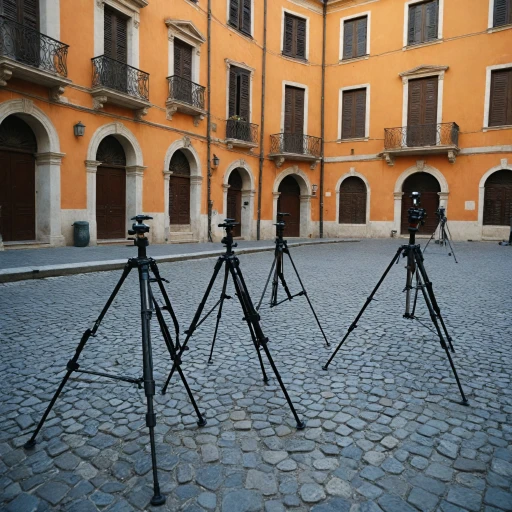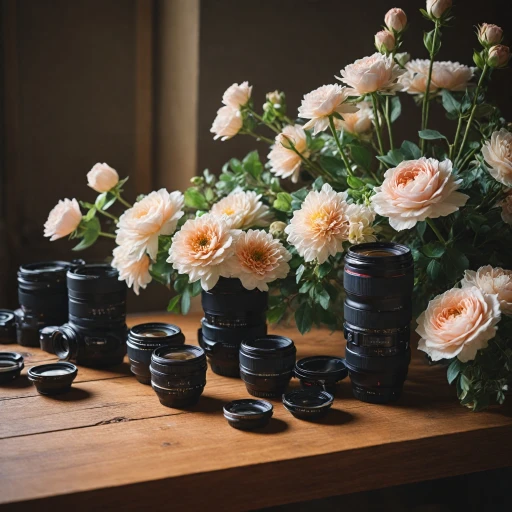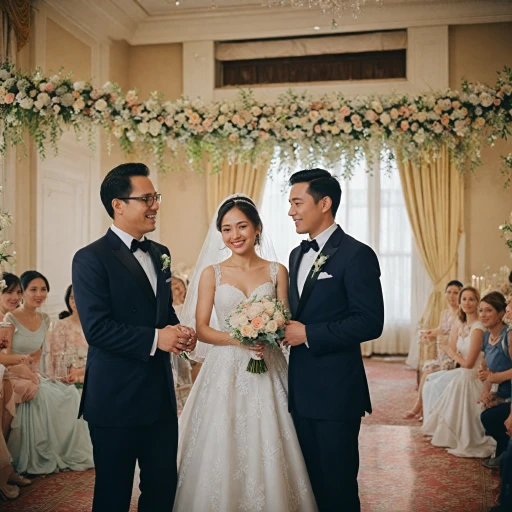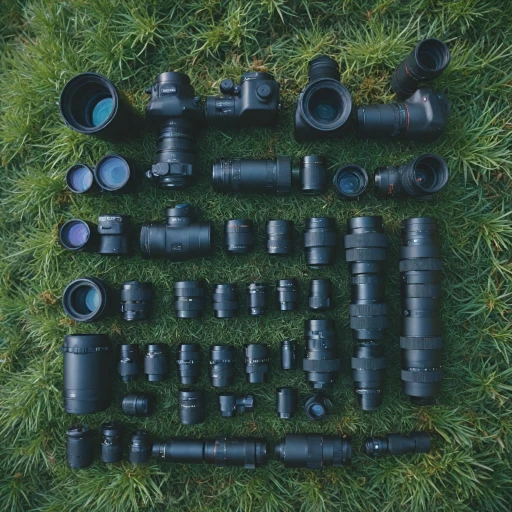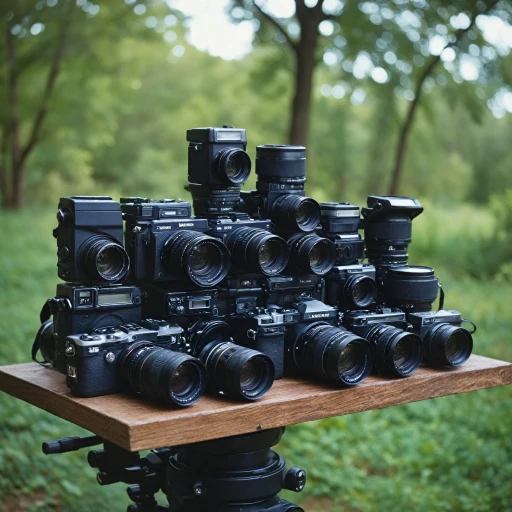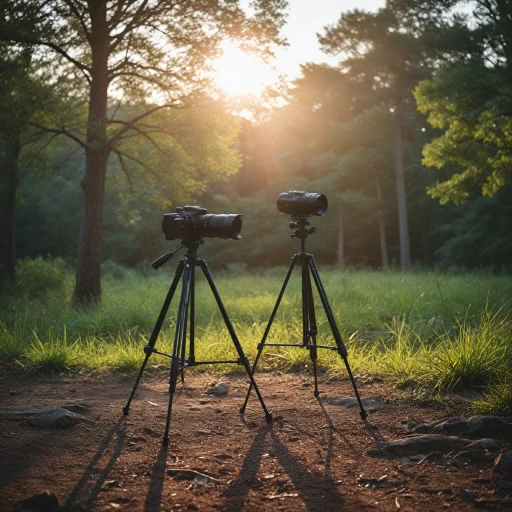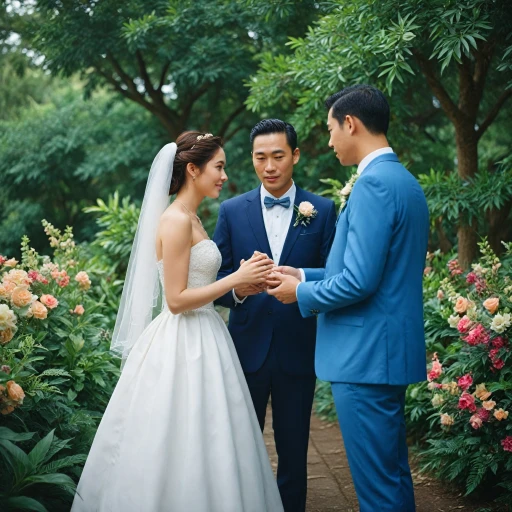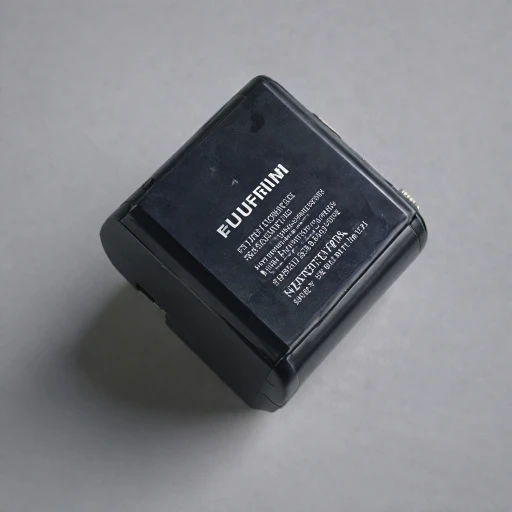
Understanding the Importance of Lens Choice
The Power of Lens Choice in Wedding Photography
When capturing the essence of a wedding day, every detail matters, and the selection of the right lens can have a transformative effect on the resulting photographs. From the intimate exchange of vows to the candid joyous moments on the dance floor, the lens plays a crucial role in translating these underlining emotions into lasting memories.
A well-chosen lens can elevate the quality of your images, bringing depth and clarity to portraits of the bride and groom and wide-angle shots of the venue. Photographers often need to switch between diverse scenes, which makes it essential to have lenses that can keep up with varying needs and light conditions. Versatile lenses are indispensable, as they provide flexibility to shoot both wide shoots and close-up portraits with great detail and precision.
In the realm of wedding photography, selecting a lens is a decision that should be made with consideration for focal length, aperture, and the ability to perform in low light conditions. Prime lenses with large aperture sizes like the Canon USM or the Nikon Nikkor are appreciated for their ability to capture beautiful, blurred backgrounds and function well in dimly lit receptions, making them an asset in a photographer's kit.
Moreover, understanding these choices will allow you to select lenses that best suit the unique demands of weddings. As you navigate through the overwhelming options available from brands such as Sony, Canon, and Sigma Art, remember that the ultimate goal is to capture the spirit of the wedding day through your lens.
Types of Lenses Suitable for Weddings
Exploring Lens Options for the Wedding Day
When aiming to capture the magic of a wedding day, the choice of lenses in your camera bag can make all the difference. Wedding photographers, whether using a Sony lens or a Canon USM, should aim for versatility throughout the event. Not all lenses are created equal, and having a variety of lens types on hand can facilitate a wide range of wedding photography styles. For ceremonies and those stunning "I do" moments, wide-angle lenses are an excellent choice. They allow the photographer to capture the grandeur of the venue and the gathering of guests in a single shot. Focal lengths of around 24mm to 35mm are popular among photographers wanting to capture both the bride, groom, and their immediate surroundings. Portraits of the bride and groom are central to every wedding photography shoot. Here, prime lenses like the classic 50mm or 85mm come in handy. These lenses deliver sharp photos and beautiful bokeh, ensuring the couple's expressions are highlighted perfectly. Canon, Nikon (Nikkor), and Sony all offer premium options in prime lenses that are praised by photographers for their clarity and depth. For capturing those intricate details, such as the ring exchange or macro shots of floral arrangements, a macro lens is invaluable. A focal length of around 100mm is typically recommended for achieving this level of detail in your photos. Many wedding photographers include macro lenses in their arsenal to ensure no detail is overlooked. Despite the variety of lenses available, it's essential to consider practical logistics like the weight of the lenses. On a bustling wedding day, carrying around lighter lenses can reduce fatigue, allowing photographers to maintain focus and energy. For those interested in delving deeper into lens choices for capturing wedding moments, our detailed guide on choosing the perfect lens for wedding photography can provide additional insights to align with your specific photography style and equipment preferences.Key Features to Look for in a Wedding Lens
Essential Features to Consider in a Wedding Lens
When selecting a lens for wedding photography, several essential features can make a considerable difference on the wedding day. With numerous brands like Canon, Nikon, and Sony offering both prime and zoom lenses, understanding these features helps wedding photographers deliver great photos, capturing every memorable stroke of the day.- Focal Length: The focal length plays a pivotal role in how you frame your shots. Prime lenses, such as the Canon USM and Nikon Nikkor, often offer sharper quality, perfect for portraits of the bride and groom. Meanwhile, a zoom lens with a wide focal range enables photographers to switch seamlessly from intimate macro shots to broader, sweeping compositions of the wedding venue.
- Aperture: A lens with a wide aperture, ideally around f/1.4 to f/2.8, is crucial for low-light conditions often encountered in weddings. These ensure excellent depth of field and beautifully blurred backgrounds, enhancing shots whether in dim churches or during lively evening receptions.
- Image Stabilization: Particularly useful when shooting in lower light or without a tripod. A lens equipped with image stabilization, like some models of the lens great Sigma Art series, helps maintain clarity and focus, ensuring sharp images despite hand-held movement.
- Autofocus Speed and Accuracy: Fast and accurate autofocus is non-negotiable. Features found in USM lenses, whether Canon or other brands, ensure precision focus on moving subjects, crucial as you capture spontaneous moments throughout the wedding day.
- Weather Sealing: Weddings can be unpredictable. Whether it’s capturing outdoor photos in varying weather conditions or indoor ceremonies, lenses with weather sealing help protect against elements such as dust and moisture, ensuring reliability throughout the day.
Top Lens Recommendations for Wedding Photographers
Top Lenses for Capturing Every Moment
When it comes to selecting the best lens for wedding photography, it's essential to consider those that have excelled in the field. Here are some top recommendations for wedding photographers based on performance, versatility, and quality.
- Canon 24-70mm f/2.8L II USM: Known for its versatility, this Canon lens is a perfect companion for capturing various settings at weddings, from wide-angle shots of the venue to intimate portraits of the bride and groom.
- Sony FE 70-200mm f/2.8 GM OSS: An excellent telephoto zoom lens, ideal for capturing candid moments or taking detailed close-ups during ceremonies without intruding on the important day.
- Nikon AF-S NIKKOR 85mm f/1.4G: A favorite for portraits, the Nikon 85mm offers stunning bokeh and sharp image quality, making it a favorite among wedding photographers for capturing stunning portraits.
- Sigma 35mm f/1.4 DG HSM Art Lens: Known for its high-quality build and sharpness, this wide prime lens is perfect for capturing the bustling energy and wider scenes during the wedding day's festivities.
These lenses are not only considered some of the best due to their unique features and abilities, but they also provide the reliability and adaptability required on such a busy and unpredictable day.
Budget Considerations for Lens Selection
Budgeting Smartly for Your Wedding Lens
When you're shopping for the perfect lens for wedding photography, budget is definitely a key element to consider. A high-quality lens often comes with a substantial price tag, but understanding your options and what to prioritize can save you both money and stress.- Understand the Range: From a Sigma Art to a Canon USM, the price range for lenses can vary significantly. Prime lenses like those from Sony and Nikon Nikkor are known for their picture quality, but they may exceed the budget of many photographers starting out.
- Balance Quality with Cost: Look for lenses that offer great performance in crucial areas such as low light conditions and focal length flexibility. A prime lens might be expensive, but investing in a versatile lens that works well across various scenarios can be a cost-effective choice in the long run.
- Consider Second-hand Options: Many experienced wedding photographers opt for gently used lenses. This can be a savvy way to access high-quality lenses like a focal length wide lens, macro lens, or an art lens without breaking the bank.
- Explore Brand Variations: While Canon and Sony lenses are popular choices, don't overlook alternatives like Sigma Art or Tamron that offer great value for their stroke width and build quality.
- Plan for Upgrades: If your budget is tight, prioritize lenses that serve multiple purposes. Over time, as your wedding photography business grows, you can invest in specialized lenses like those ideal for portraits or macro shots.
Tips for Maximizing Lens Performance at Weddings
Unlocking the Full Potential of Your Wedding Lenses
Maximizing the performance of your lenses on a wedding day can make the difference between capturing good photos and creating stunning, memorable portraits. Here are a few tips that aspiring and seasoned wedding photographers can incorporate into their shoot to make the most out of their chosen lenses.- Understand Your Lens's Focal Length
Different focal lengths can produce vastly different results. A wide lens is perfect for capturing the grandeur of the wedding venue or crowd scenes, while a prime lens can help you focus on intimate details like the wedding ring exchange or close-up portraits of the bride and groom. - Utilize Low Light Capabilities
Consider lenses with large apertures like the Canon USM or a prime lens for capturing weddings in dimly lit venues. Such lenses excel in low light, making them ideal for evening receptions or candle-lit ceremonies. - Explore Different Lens Types
Profoundly versatile lenses, such as the Sigma Art or Nikon Nikkor, offer flexibility in focal lengths, allowing you to seamlessly transition from wide-angle shots of the ceremony to stunning macro details of the décor. - Embrace Camera Compatibility
Ensure that your chosen lenses are fully compatible with your camera body, whether it be Canon, Sony, or another brand. Aligning the lens with your camera's functionalities guarantees optimized performance and sharper wedding photos. - Invest in a Strong Lens Portfolio
It's always beneficial to have a diverse collection of lenses - from macro lenses for intricate detail shots, to wide lenses for expansive venue captures. A well-rounded arsenal equips photographers to tackle the unpredictable nature of wedding photography.
